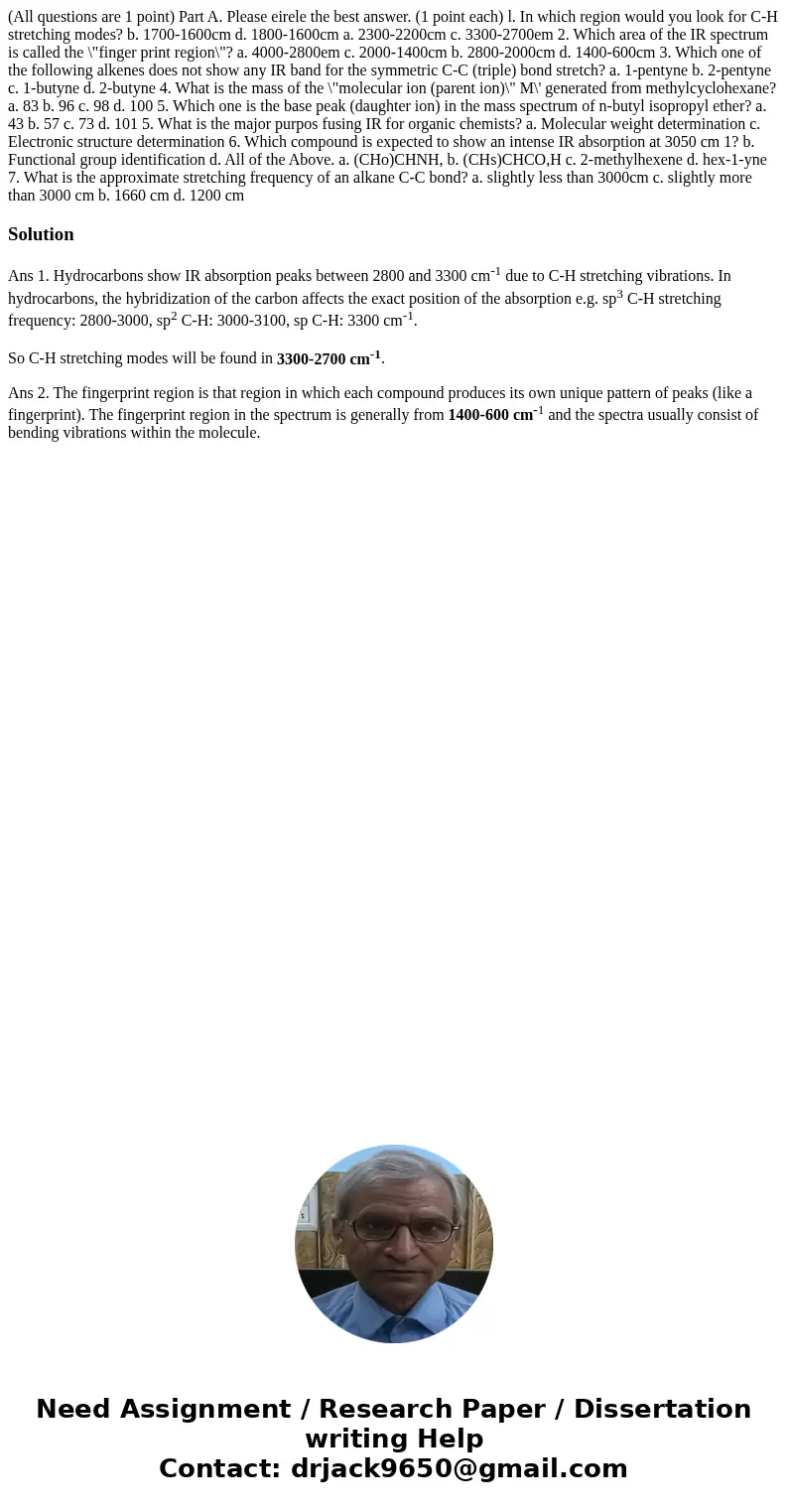All questions are 1 point Part A Please eirele the best answ
(All questions are 1 point) Part A. Please eirele the best answer. (1 point each) l. In which region would you look for C-H stretching modes? b. 1700-1600cm d. 1800-1600cm a. 2300-2200cm c. 3300-2700em 2. Which area of the IR spectrum is called the \"finger print region\"? a. 4000-2800em c. 2000-1400cm b. 2800-2000cm d. 1400-600cm 3. Which one of the following alkenes does not show any IR band for the symmetric C-C (triple) bond stretch? a. 1-pentyne b. 2-pentyne c. 1-butyne d. 2-butyne 4. What is the mass of the \"molecular ion (parent ion)\" M\' generated from methylcyclohexane? a. 83 b. 96 c. 98 d. 100 5. Which one is the base peak (daughter ion) in the mass spectrum of n-butyl isopropyl ether? a. 43 b. 57 c. 73 d. 101 5. What is the major purpos fusing IR for organic chemists? a. Molecular weight determination c. Electronic structure determination 6. Which compound is expected to show an intense IR absorption at 3050 cm 1? b. Functional group identification d. All of the Above. a. (CHo)CHNH, b. (CHs)CHCO,H c. 2-methylhexene d. hex-1-yne 7. What is the approximate stretching frequency of an alkane C-C bond? a. slightly less than 3000cm c. slightly more than 3000 cm b. 1660 cm d. 1200 cm 
Solution
Ans 1. Hydrocarbons show IR absorption peaks between 2800 and 3300 cm-1 due to C-H stretching vibrations. In hydrocarbons, the hybridization of the carbon affects the exact position of the absorption e.g. sp3 C-H stretching frequency: 2800-3000, sp2 C-H: 3000-3100, sp C-H: 3300 cm-1.
So C-H stretching modes will be found in 3300-2700 cm-1.
Ans 2. The fingerprint region is that region in which each compound produces its own unique pattern of peaks (like a fingerprint). The fingerprint region in the spectrum is generally from 1400-600 cm-1 and the spectra usually consist of bending vibrations within the molecule.

 Homework Sourse
Homework Sourse